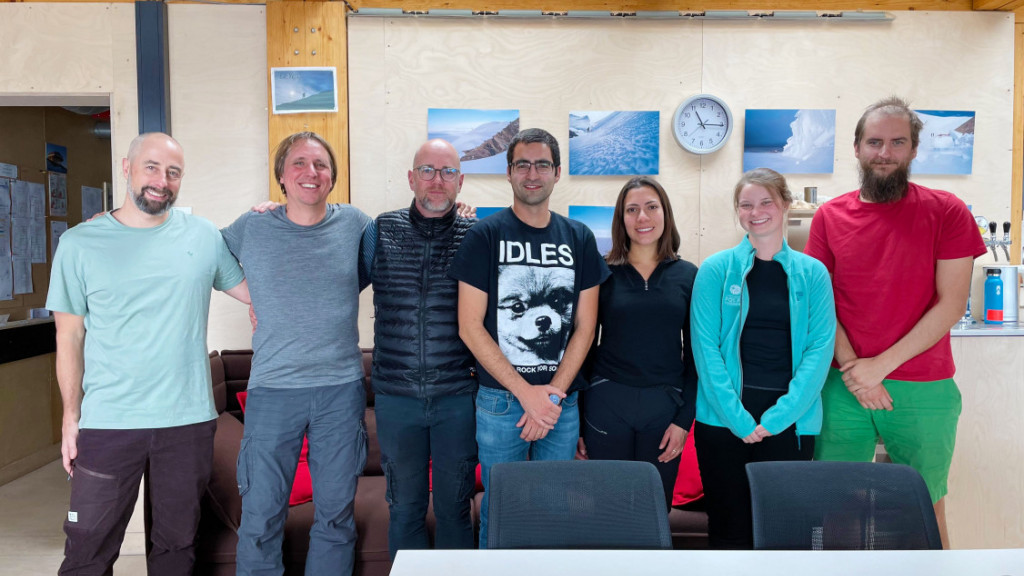More Scientists and Crew Arrive as Weather Improves
Sunny skies have returned to vicinity of the Princess Elisabeth Antarctica just in time for new arrivals at the station!
Early on Thursday morning, December 21st, six scientists arrived at the station along with new members of the station crew, including a new doctor and field guide.
After undergoing the requisite two days of field and safety training, scientists from three Belgian research projects will get to work.
PASPARTOUT
Sibylle Boxho from the Universié Libre de Bruxelles (ULB) and Paula Lamprea Pineda from UGent will be working on the PASPARTOUT project. This project seeks to establish an in-depth understanding of the links between atmospheric circulation patterns, weather regimes, particles, volatile organic compounds, and moisture, as well as determine the origins of these particles (natural or anthropogenic) of organic and inorganic compounds, and investigate the implications of these particles within the context of a changing global climate.
During this season, with the help of IPF station crew, they will install several instruments on the roof of the station and in the vicinity of the station. They will also head out to the coast to install particle samplers and take snow samples at different depth of a trench that they will dig in the surface snow.
ExPoSoils
Quinten Vanhellemont from the Royal Belgian Institute of Natural Sciences (RBINS) is returning to Antarctica to work on the ExPoSoils project. The project is studying the effects of increased temperature and snow cover on the biodiversity and genetic functional potential of microbial communities.
During this season he will take samples from existing open-top chambers and snow fences in the vicinity of the station, collect data from data loggers, install time-lapse cameras, and re-install the HYPSTAR radiometer (which had previously been developed for and used by the EU-financed HYPERNETS project) to monitor solar radiation reflectance.
4SAT
Two members of the Belgian military along with Maarten Baes from UGent will be looking for suitable locations for a possible Space Situational Awareness telescope, which would observe objects in space to ensure the safety of space for all users. The team will look at weather and astronomical conditions at different possible sites.
RINGS
A team of Chinese researchers (four scientists and three pilots) are also planned to arrive towards the end of the year separately to conduct radar surveys of the ice between the Princess Elisabeth Antarctica and Prydz Bay at the coast to study the ice discharge from the Antarctic Ice Sheet as part of the RINGS project. The purpose behind this international working group established by the Scientific Committee on Antarctic Research (SCAR) is to get a clearer idea of ice discharge bedrock topography around the coast of Antarctica, which is important in understanding the mass balance of the ice sheet.
The Chinese team will conduct two round trip flights from Zhongshan station to PEA in the coming weeks, taking measurements of ice thickness and topography all along the grounding lanes between the two stations.
The Princess Elisabeth Antarctica station is getting crowded! It's going to be a crowded holiday season

